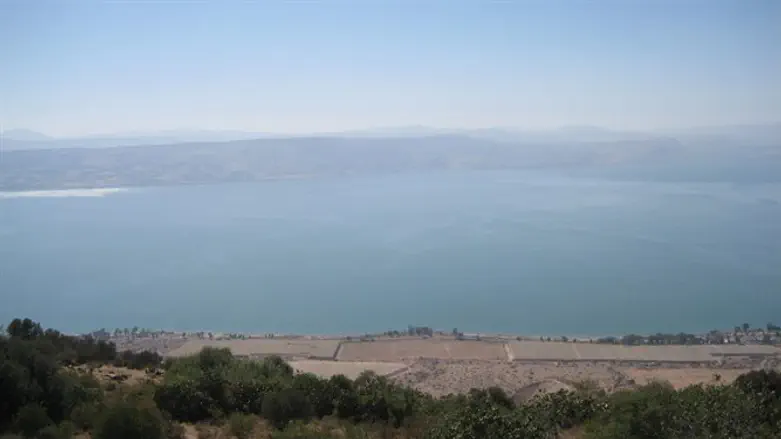
Five artillery shells - apparently of Ottoman empire vintage - that were found in the Kinneret three weeks ago, were removed yesterday (Tuesday) in a complex operation, and subsequently destroyed by police sappers.
Warrant Officer Ziv Livni, a police bomb expert, told Walla News about the operation yesterday: "We were in peak vacation season, and it was in an active vacation site. The first squad of sappers who arrived at the scene understood that these shells could explode, even after a hundred years.
"Immediately after they were found, a fence was put around the area. We waited until the vacation season, as the shells were located in an isolated area where people don't generally go. Yesterday the time came to deal with them. We needed to get the shells out of the mud and load them one-by-one using special equipment, all in the heavy heat."
Livni emphasized that the sappers "know what to watch out for" when moving these kind of explosives. They took the shells to a nearby open area in order to destroy them. Livni said that encountering the shells was a moving personal experience for him, "an Israeli history enthusiast."
Livni is an expert on old weaponry, and explained that dealing with explosives of this kind is a more complex matter than dealing with explosives of the type currently in use. "It's not like when you encounter IDF explosives. In that case, I know what I'm dealing with. There were large cannon shells, 150 millimeters in diameter, with each shell over half a meter long and weighing 40 kilograms. It's not the kind of thing I can just put on my car and drive away with.
"When encountering old explosives you need to determine what era they're from. Israel is full of battle sites, but we managed to connect these particular shells to World War I. They were found along the route of the Ottoman retreat from Israel, as they were leaving after the area was conquered by the British, and it's fair to assume that the Turks left behind things that could hinder their progress.
"It's important to identify exactly what kind of artillery you're dealing with because each type of shell has its own explosion mechanism which could very well be alive and kicking even a hundred years later," Livni explained.
The removal operation took hours. Each shell was removed separately and people were kept away from the entire area, with nearby roads being closed.